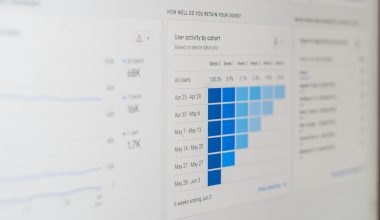When we think about Search Engine Optimization (SEO), we often jump straight to keywords, backlinks, and content. But there’s a crucial component that many website owners overlook — site architecture. While it’s the behind-the-scenes framework of your website, its role in how search engines crawl, index, and rank your site is monumental. A well-structured site can enhance user experience, boost page speed, and help search engines understand your content better, all of which are important SEO ranking factors.
What Is Site Architecture?
Site architecture refers to the way your website’s pages are organized and linked together. Think of it as the blueprint of your site. It determines how users and search engine bots move through your content. A solid structure ensures that both can easily navigate and find what they’re looking for without hitting dead ends or getting lost in complicated navigation systems.
Why Site Architecture Matters for SEO
Good site architecture doesn’t happen by accident. It’s deliberately designed to support both usability and search optimization. Here’s how it contributes to better SEO performance:
- Improves Crawlability: Search engines use crawlers to explore web pages. A clean, organized structure makes it easier for them to find and index all your pages.
- Enhances Indexation: Well-structured sites guide bots through your entire site, ensuring more of your pages get indexed and show up in search results.
- Distributes Link Equity: Internal linking structure helps distribute the authority from one page to others, strengthening SEO sitewide.
- Boosts User Experience: A logical layout enables visitors to easily find the information they need, lowering bounce rates and increasing engagement metrics.

Key Elements of SEO-Friendly Site Architecture
Creating a site architecture that favors SEO involves some best practices. Here are the most impactful ones:
- Flat Structure: Ensure that most of your pages are just a few clicks away from the homepage. A flat site architecture improves crawlability and accessibility.
- Logical Hierarchy: Use categories and subcategories to organize content in a way that makes sense hierarchically. This helps both users and bots understand how content is related.
- Internal Linking: Interlink related pages with descriptive anchor text. This not only distributes link equity but also creates topic clusters that strengthen SEO relevance.
- URL Structure: Use clean, keyword-rich URLs that reflect the hierarchy of your site’s pages. Avoid overly complex URLs with confusing parameters.
- Mobile Optimization: An SEO-friendly structure must work well on mobile. Responsive design, easy navigation, and fast loading times are critical.
The Impact on Crawl Budget
Search engines allocate a specific amount of resources — known as a crawl budget — to each website. If your site architecture is cluttered or confusing, bots may waste time crawling unimportant or duplicate pages, missing the valuable ones. A well-structured website ensures that this budget is used efficiently, improving visibility for your key content.
Facilitating Content Discovery
Imagine posting a valuable article that no one, including search engines, ever finds. Good site architecture prevents this from happening by connecting all your content logically. Properly linking new blog posts from related category pages or featuring them on the homepage can dramatically improve their visibility and ranking potential.

Use of XML Sitemaps and Navigation Menus
While proper architecture aids crawlability, supporting tools like XML sitemaps provide an additional roadmap for search engines. They act as a backup, ensuring all your important content is discoverable. Similarly, well-organized navigation menus guide users and search engines alike, sending signals about what content is most important.
Common Pitfalls to Avoid
Even with the best intentions, poorly designed site architecture can sabotage SEO. Here are some mistakes to avoid:
- Too many clicks to reach important content
- Multiple pages targeting the same keyword (causing keyword cannibalization)
- Broken internal links and orphan pages
- Poor mobile structure and usability
Conclusion
Site architecture is more than just a design issue — it’s a foundational SEO element. By creating a well-organized, easy-to-navigate website, you not only boost your chances of higher search rankings but also improve the overall user experience. Whether you’re building a new site or optimizing an existing one, paying attention to structural elements can deliver long-term SEO benefits that compound over time.





